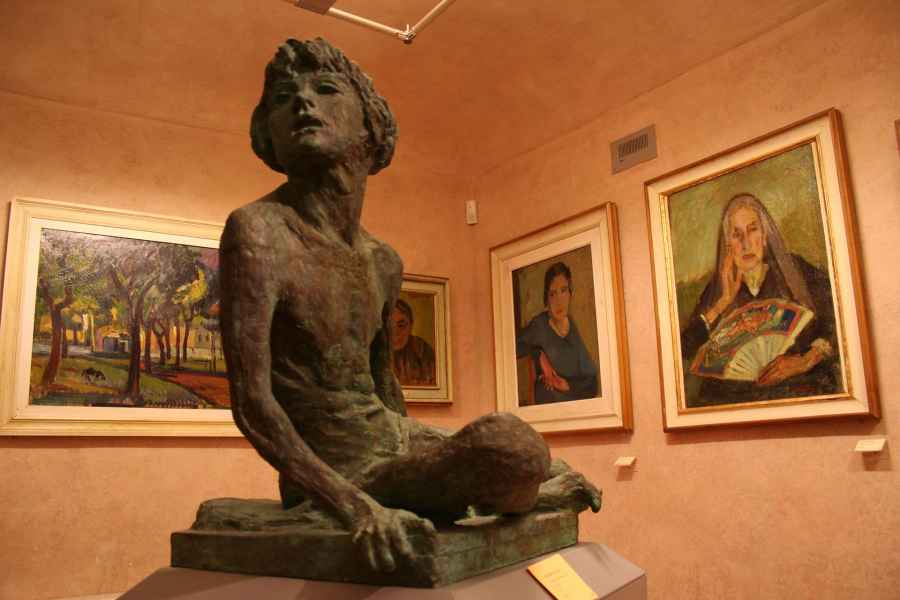The Museum of Fucecchio, housed in Palazzo Corsini and inserted within the Park where the towers of the 14th-century Rocca Fiorentina can still be seen, can today be considered the "city museum". The three sections—Archaeological, Historical-Artistic, and Naturalistic—narrate the history of Fucecchio and the transformations of the Fucecchio landscape over time, in chronological stages and themes.
The thematic room entitled "A story of the Arno" illustrates the special role of the river as a long-term commercial carrier, through a wide display of amphorae, used for transport along the river during ancient times, and objects on board the medieval wreck of Empoli. The shipwrecked vessel near Empoli was a ferry for river navigation, extraordinarily well preserved, and very similar to the one drawn by Leonardo on one of the folios of the Codex Atlanticus (f. 27r). The objects from the wreck, including an archaic majolica jug, date the shipwreck back to the first half of the 14th century. The shipwreck was probably caused by the 1333 flooding of the Arno. The river ferry was also equipped with a caulker’s ax for the adjustment of the keel on site, and a steelyard, indicating the boat’s function as freight transport. Extensive documentation of the work of the master hull-working craftsmen who worked on the banks of the Arno in Leonardo’s time can be consulted at the Centro Espositivo della Cantieristica navale e del Canottaggio di Limite Sull’Arno (Navy Shipyard and Oarsmen Exhibition Center of Limite Sull'Arno).
In the Historical-Artistic Section of the museum you can admire a work that is truly interesting for the details represented, the Madonna with the Child in glory and saints by Giovanni di ser Giovanni, called Lo Scheggia, brother of Masaccio. The Virgin with the infant Jesus, framed by the violent red of the cherubs, is flanked by the figures of four Saints. On the left side, San Sebastiano is positioned on a spur of land, while San Lazzaro and Santa Marta and Santa Maddalena are standing on a typical marsh vessel, the noccolo, or small, flat-bottomed boat. This is an allusion to the journey of the three saints who, according to tradition, arrived in Provence from Palestine. In the Fucecchio marshes, small boats identical to the one painted in the mid-15th century by Lo Scheggia are still in use (Centro di Ricerca, Documentazione e Promozione del Padule di Fucecchio). By contrast, Leonardo seems to have drawn, on the expanse of water situated at the center of the 1473 Paesaggio dell’Arno (Arno Landscape)—according to a recent interpretation, the Fucecchio Marshes—one or two navicelli, another type of marsh watercraft with typically curved bows. The 1473 Paesaggio dell’Arno will be on display in the exhibition entitled "At the Origins of the Genius" (Museo Leonardiano, Vinci, 15 April - 15 October 2019).















